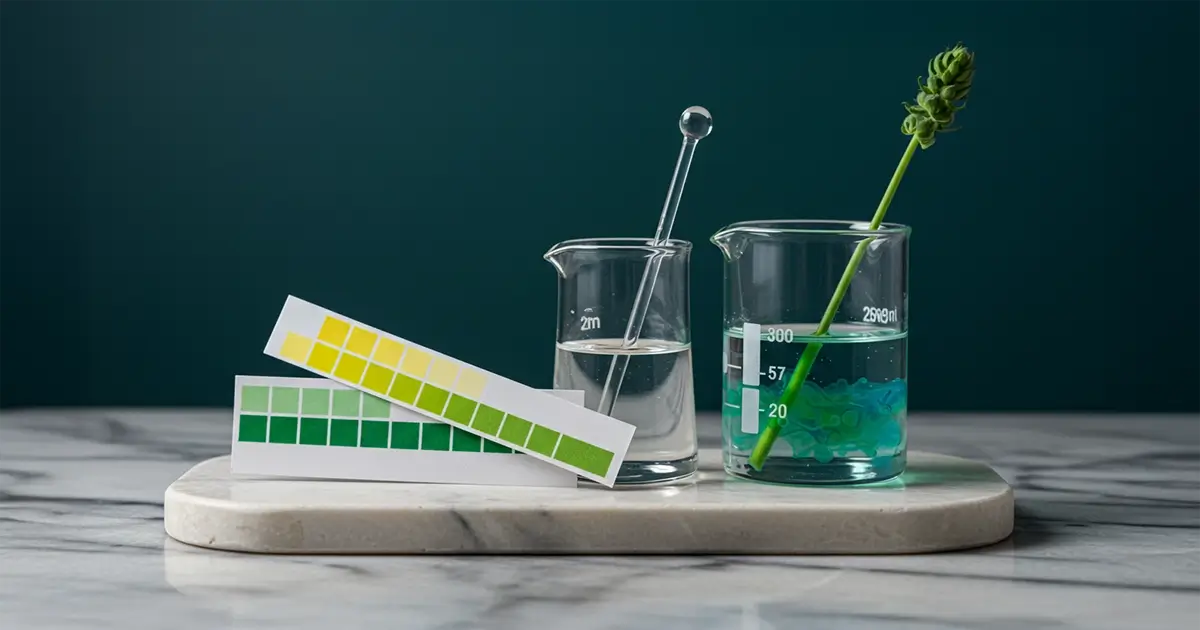Keeping facial pH in its happy place protects the invisible "acid mantle" that keeps moisture in, bacteria out, and confidence high. Today I'll share what pH really means for skin, why it drifts off-course, and exactly how to coax it back into balance - expect practical steps, research nuggets, and one cheerful joke. Approx. 11-minute read.
The Delicate Dance of Facial pH
Imagine a microscopic ballet on your cheeks: free fatty acids, amino acids, and lactic acid swirl together and settle at a slightly acidic 4.5 – 5.5. Dermatologists call this film the acid mantle, and its chemistry decides whether your skin feels silky or sulks with flakiness. A 2024 review in the Journal of Integrative Dermatology confirmed that pH below 5.0 tightens cell-to-cell "mortar", keeping irritants out while supporting a diverse microbiome.
When the mantle holds steady, enzymes work efficiently, lipid production hums along, and resident bacteria compete with invaders. Tip the scale toward alkaline territory and those enzymes snooze, lipids dwindle, and opportunistic microbes throw a party. In plain terms, balanced pH is the cheapest insurance policy for clear, comfortable skin.
Curious what the mantle actually does? Let's zoom in:
- Fends off pathogenic bacteria by creating an unfriendly acidic environment.
- Optimises ceramide-forming enzymes, strengthening the barrier.
- Regulates natural moisturising factors, so hydration stays put.
- Encourages friendly flora that outcompete trouble-makers such as Staphylococcus aureus.
Enemies of Balance: Everyday Disruptors
Our daily habits can nudge pH in the wrong direction faster than you can say "squeaky-clean" - and yes, squeaks belong on rubber ducks, not on cheeks. Over-cleansing tops the list: foaming surfactants rinse away acids, leaving skin as alkaline as hand soap. Hard water then deposits minerals that raise pH even more, no matter how fancy your cleanser claims to be.
Environment joins the sabotage crew. Urban particulate matter penetrates compromised barriers and sparks inflammation, according to an in-vivo study on pollution-exposed skin. Meanwhile, sudden humidity shifts make sweat glands release alkaline sweat that sits on the surface like a sticky cocktail, waiting to disrupt enzyme activity.
Here's a quick checklist of common culprits:
- Alkaline bar soaps and detergent-heavy foams.
- Long, hot showers (heat dilates follicles, pushing sebum out, and raises pH).
- Tap water rich in calcium and magnesium.
- Overuse of abrasive scrubs or high-percentage exfoliating acids.
- Stress surges that alter cortisol and sebum composition.
Building a pH-Friendly Routine
Good news: re-balancing isn't complicated, it just needs consistency. Start with a mildly acidic, sulfate-free cleanser (pH 4.5 – 5.5) and lukewarm water - my kettle stays strictly for tea. Pat dry, then use a toner formulated to glide between 4.0 and 5.0. This step reins in any alkaline drift from the faucet and preps skin for actives.
Serums come next. I look for niacinamide or panthenol, gentle multitaskers that buffer acidity while reinforcing lipids. Follow with a moisturiser containing ceramides and free fatty acids. They act like bricklayers, sealing tiny cracks so moisture doesn't "escape through the roof."
- Cleanse: 30-second massage, rinse, pat - no squeaks.
- Tone: Saturate cotton or palms; press, don't rub.
- Treat: Apply targeted serum, respect its pH window.
- Moisturise: Lock in hydration with occlusives plus lipids.
- Shield: Broad-spectrum SPF, because UV stress can skew pH too.
Ingredient Spotlight: Acids, Bases and Neutral Heroes
Skincare labels can read like a chemistry quiz, so let's decode a few stars. Alpha hydroxy acids such as lactic and mandelic sit below pH 4, dissolving dead cells without gutting the mantle when used sparingly. Polyhydroxy acids bring similar glow at pH ~3.8 but with larger molecules, so they sting less.
Bases rarely appear on purpose, but sodium hydroxide sneaks in to adjust viscosity. If it tops the ingredient list, step away politely. Instead, reach for neutral heroes: panthenol, glycerin, and beta-glucan. They hug water and calm redness without rocking the pH boat. Harvard Health reminds us that vitamin C works best at pH lower than 3.5, which is why L-ascorbic serums tingle (Harvard Health Publishing).
Quick pairing guide:
- Morning: Low-pH cleanser + antioxidant serum + SPF.
- Evening: Cleanser + gentle acid or retinoid (alternate nights) + lipid-rich cream.
- Weekly rescue: Sheet mask soaked in pH 5 essence after flight, sun, or flu - pure comfort.
Lifestyle Habits That Support Skin Resilience
Skincare doesn't clock out at the bathroom sink. Balanced meals rich in omega-3s curb inflammation, while fermented foods seed the gut with microbes that indirectly tame skin reactivity. Hydration matters too, but swap sugary drinks for water plus electrolytes - glucose spikes accelerate barrier breakdown.
Sleep is the underrated esthetician working nightshift. Deep waves of growth hormone orchestrate repair, yet even a single late-night streaming binge can leave skin slightly more alkaline by morning. Keep room humidity around 45 %, and cue a calming playlist to drift off.
Daily lifestyle hacks to lock in balance:
- Swap cotton pillowcases every three nights to limit microbial build-up.
- Rinse face after swimming; chlorine clocks in at pH ~9.
- Use a shower filter if your region has hard water.
- Practice box breathing - stress hormones raise sebum pH.
- Bookmark my earlier post on skin-type basics for context whenever routine tweaks stall.
FAQ
What is the ideal pH for facial skin?
Most experts agree on a range between 4.5 and 5.5, with emerging research suggesting 4.7 is the sweet spot. Staying slightly acidic helps enzymes synthesise lipids, strengthens the barrier, and discourages harmful bacteria.
Can drinking alkaline water improve skin pH?
Internal pH and surface pH are controlled by different mechanisms, so sipping alkaline water won't budge your acid mantle. Your kidneys keep blood near 7.4 regardless of beverage trends, while topical care governs the skin surface.
How quickly can I rebalance my skin after using harsh soap?
Your acid mantle begins restoring itself within a few hours, yet complete equilibrium may take up to 14 hours. Using a slightly acidic toner and a barrier cream speeds recovery, especially if you avoid additional irritants that same day.
Do foaming cleansers always raise pH?
Not always, but many use sulfates that do. Look for coco-betaine or glucosides instead, and check if the product lists a pH around 5. Independent lab tests provide extra reassurance when in doubt.
Is it safe to layer vitamin C and niacinamide?
Yes, modern formulations suit coexistence, yet apply vitamin C first because it needs a lower pH. Wait a couple of minutes before patting on niacinamide serum so each active performs at its optimal acidity.
Conclusion
Facial pH might be invisible, yet its effects are written all over our reflection. By choosing low-pH cleansers, monitoring ingredient synergy, and tweaking daily habits, we nurture the acid mantle that keeps complexions calm and resilient.
Now it's your turn - share your balancing wins or woes in the comments. See you in the next post, until then, take good care of your skin!


Comments (0)
No comments yet - be the first to share your thoughts!
Leave a Reply
Your email address will not be published. Required fields are marked *